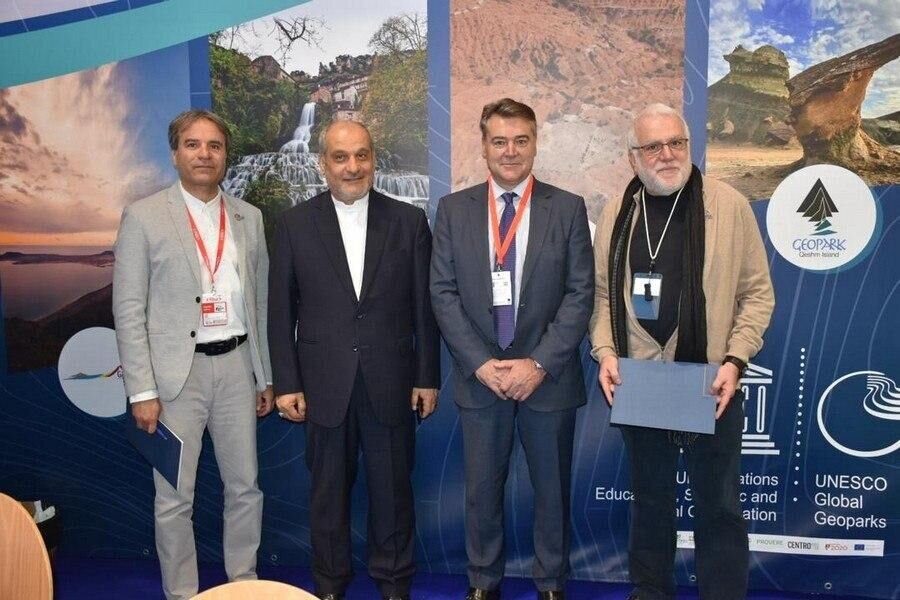UNESCO-registered Iranian, Spanish geoparks sign MoU

TEHRAN – Iran’s Qeshm and Spain’s Villuercas Ibores Jara geoparks, both registered on UNESCO Global Geoparks Network, have signed a memorandum of understanding (MoU) to expand cooperation in the field of ecotourism, IRNA reported on Saturday.
The agreement was signed by Qeshm geopark director Alireza Amirkazemi and Villuercas Ibores Jara geopark director José Maria Barrera at the 40th FITUR tourism trade fair, which will be running through January 26 at the Spanish capital.
Exchange of experience and information as well as sightseers, and promotion of handicrafts exports are among the pillars of the agreement, the report said.
Villuercas Ibores Jara is situated in the south-east of the province of Caceres (in Extremadura, Spain). It’s extraordinarily rich in natural heritage including protected birds, biodiversity corridors, monumental trees, and Biosphere Reserves, with emblematic species such as the abundant cranes and raptors linked to the quartzite outcrops of the sierras: griffon, black and Egyptian vultures, black storks, eagle owls and golden eagles.
Qeshm is an island which has the shape of a dolphin. It is the largest island of the Persian Gulf region and stands parallel to the south coasts of the Hormuz Strait. The island has abundant wildlife, including birds, reptiles, dolphins and turtles. In Qeshm Island, zoogeographical areas of Palearctic and Oriental, and phytogeographical areas of Afro-tropical, Oriental and Eurasian, are meeting each other, which generated a huge variety in fauna and flora.
AFM/MG
Leave a Comment